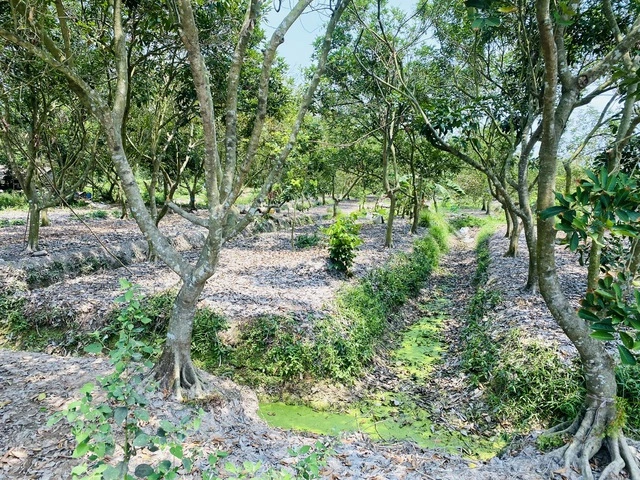The flood season in the Mekong Delta has ended and the rice granary in the West is entering the dry season, with saltwater intrusion forecast to be more severe than the average of many years.
Unseasonal rain helps drought less severe than last year
In the 2024 flood season summary bulletin , the Southern Institute for Water Resources Planning (SIWRP) said: 2024 is a year of small floods in the Mekong Delta, the flood peak appears late and recedes quickly. The flood peak in Tan Chau was recorded on October 4, reaching 3.38m, 0.12m lower than alert level 1 and 0.49m lower than the average of many years. In Chau Doc, the flood peak occurred on October 5, reaching 3.14m, 0.14m higher than alert level 1 and 0.35m lower than the average of many years. The rice granary in the West is entering the dry season and saltwater intrusion is forecast to be more severe than the average of many years.
However, due to high tides combined with upstream floods, the flood peak in the midland and coastal areas falls within the high flood year, commonly from alert level 2 – 3 and above alert level 3 during the high tide period between mid-October and mid-November. This causes flooding in many places in low-lying provinces and riverside areas.
Currently, the water level on the Mekong mainstream at Kratie station (Cambodia) as of November 30 is lower than the average of many years and lower than in 2023, but much higher than the same period in 2019 and 2015. The volume of Tonle Sap (Cambodia) as of November 30 is slightly lower than in 2023 and the average of many years. Similarly, the water level of the Mekong River upstream at Tan Chau and Chau Doc tends to decrease in the last week of the flood season. The inland water level at the end of the flood season is low and fluctuates strongly with the tide.
The water level of the Mekong River upstream at Tan Chau as of November 30 is lower than the average of many years and lower than in 2023. Meanwhile, the forecasted high tides in the dry season months of 2024 – 2025 are at a high level, much higher than the average of many years, especially in December 2024 and January 2025.
“The risk of drought and saltwater intrusion in the 2024-2025 dry season is still forecast to occur and will be higher than the average of many years, but it is highly likely that it will not be as severe as the 2023-2024 dry season. The reason is that a mild La Nina condition is currently occurring and may last until March 2025. The possibility of unseasonal rains will appear more frequently during this period than the average of many years and the same period in 2023-2024, and there is less risk of prolonged heat like in 2023-2024,” SIWRP said.
China’s hydropower plants store record amounts of water
According to MDM ( Mekong River Dam Monitoring Project ), last week, the water level at China’s Nuozhadu Dam, the largest dam in the Mekong River basin, recorded a record high of 810.6m and a capacity of about 11.69 billion m3 . In the past, the highest water level at this dam was recorded at 809.6m on October 29, 2018. The dams’ storage of water in the rainy season and release of water in the dry season has affected the river’s natural flood rhythm and caused serious damage to the ecosystem, especially in the lower basin.
Over the past week, dams have also begun releasing water and several other dams downstream have taken turns storing water. There are 16 dams releasing water and 7 dams downstream storing water; the largest releases came from Xiaowan Dam (China), 722 million m3 , Jinghong Dam (China), 144 million m3 and Nam Ngum 2 Dam (Laos) 204 million m2. The largest water storages were recorded at Huangdeng Dam (China), 162 million m3 , Nuozhadu Dam (China), 332 million m3 and Nam Ngum 1 Dam (Laos), 108 million m3 .
















